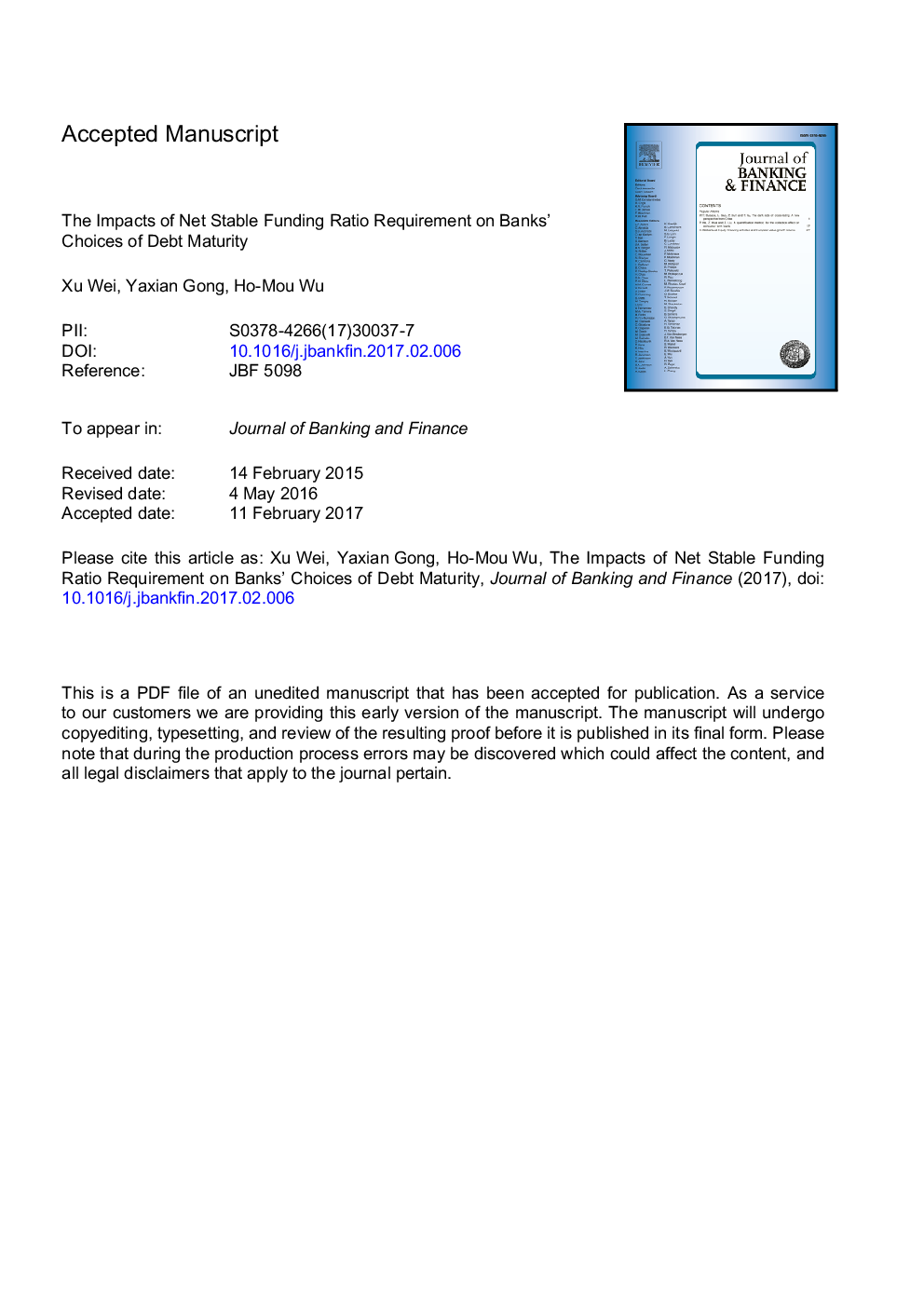| Article ID | Journal | Published Year | Pages | File Type |
|---|---|---|---|---|
| 5088022 | Journal of Banking & Finance | 2017 | 34 Pages |
Abstract
In this paper, we study the impacts of the Net Stable Funding Ratio (NSFR) requirement on banks' choices of debt maturity and asset structures, with consequences for banks' profitability and social welfare. We develop a model in which the manager of a bank determines both debt maturity structure (short-term vs. long-term debt) and asset composition (cash vs. risky assets). To address the incongruence of goals between the bank manager and the bank stakeholders, in our model we assume that the manager receives only a proportion of the bank's profit in her pay schedule. We demonstrate that the optimal choices of the manager regarding debt maturity and asset structure lead to socially inefficient (second-best) outcomes because the manager internalizes only part of the social benefit. We then study the implications of the NSFR requirement on the manager's choices and demonstrate that the NSFR requirement can enhance social welfare and reach an efficient (first-best) outcome, if a sufficiently low weight of short-term debt as available stable funding is required by regulation. Further, we find that under the same conditions the NSFR requirement reduces banks' use of short-term financing and thus increases the probability of banks' survival and profits from the ex ante point of view, while it decreases banks' profits from the ex post point of view, since it reduces the threshold for banks' survival. Our main results have some interesting empirical implications: under certain conditions, the NSFR requirement may reduce both bank failures and banks' observed profits.
Related Topics
Social Sciences and Humanities
Economics, Econometrics and Finance
Economics and Econometrics
Authors
Xu Wei, Yaxian Gong, Ho-Mou Wu,
